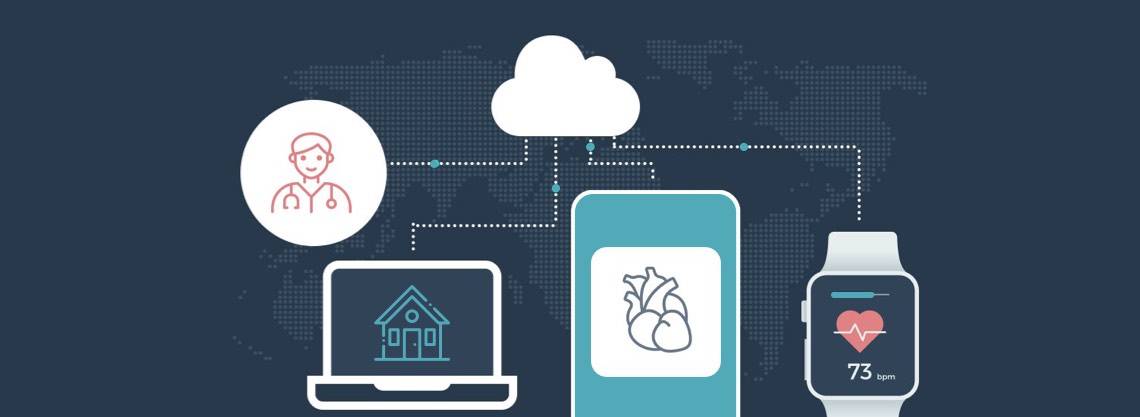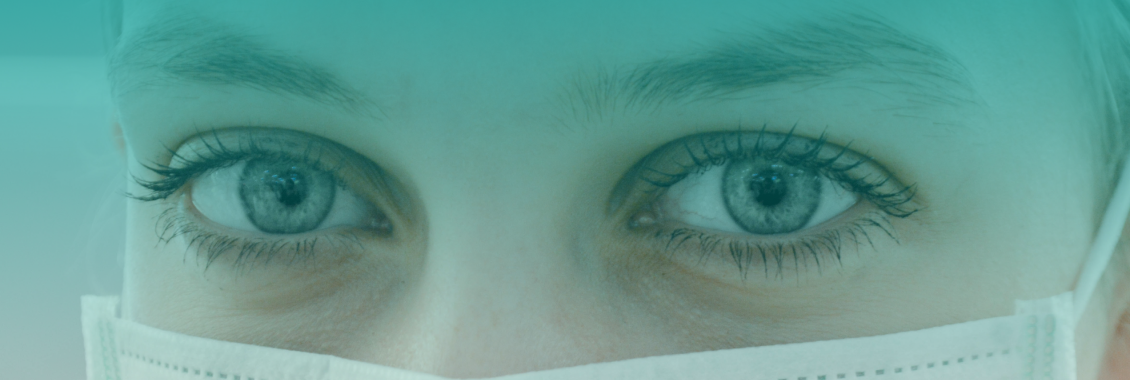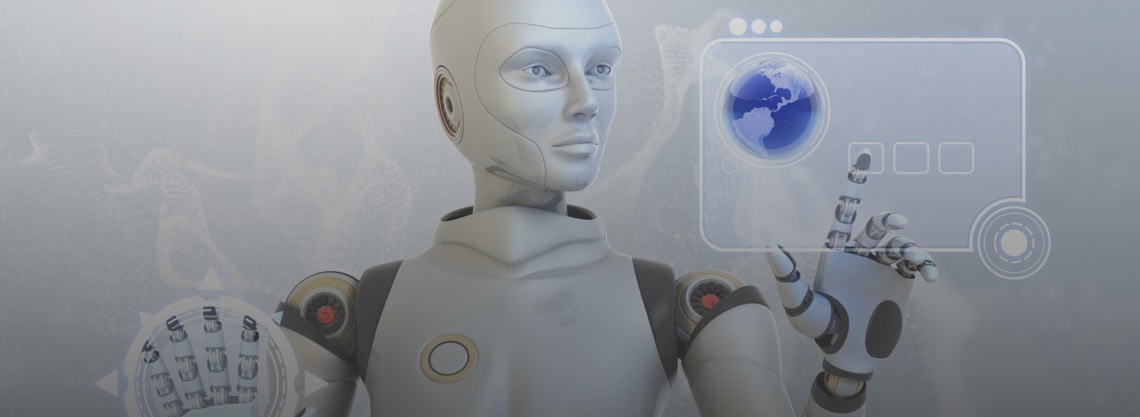Living in a Smarter World: Why Use AI-Enabled IoT in Healthcare
articlesartificial intelligencehealthcareinternet of thingsArtificial Intelligence and Internet of things are hot topics now, as a consequence, integrating AI into IoT is becoming a common practice.
The healthcare system is everybody’s business, so finding one's way around is equally important for all. Yet, keeping all the details in mind is no easy task. There are limits to human mental and physical performance. Thus going beyond one’s maximum has to be relegated to such technologies as the Internet of things and Artificial Intelligence. The implementation of innovative solutions in healthcare is always a good idea and IoT together with AI are strong drivers of the digital transformation regardless of what field the technologies are applied in.
Municipal infrastructure, smart homes, retailing, manufacturing, supply chain, education, healthcare and life sciences — the entire digital ecosystem, an IoT ecosystem of connected devices, has been created and is growing stronger with each passing day. Empowered with Artificial Intelligence and Machine Learning, among other things, IoT is used as a means of equipping people with intelligent assistance. Gradually, it is taking over both minor and major processes in a number of industries. Healthcare is no exception.
Why combine IoT and Artificial Intelligence?
It works both ways — IoT and AI need each other. The Internet of things implies handling very large volumes of data which has to be made sense of and put to work. Thus, the IoT-related functions can and should be enhanced by AI algorithms to make the experiences truly meaningful for users and/or customers. Well, what kind of meaning does AI provide to IoT?
Since IoT is a young technology that connects the gazillions of smart devices, it does have imperfections. For instance, such criteria as accuracy and speed of IoT data transmission are yet to be improved. Plus, an artificial intelligence system not only mimics the human way of performing tasks but it is also learning from what it patterns itself from. This mechanism of self-improvement is of the essence to AI. Speaking in general terms, Artificial Intelligence has much for IoT to take advantage of. In the narrow sense, it is applied as the AI software embedded within IoT devices and augmenting fog or edge computing solutions to bring intelligence to IoT. As a result, smart devices generate such a huge amount of rapidly analyzed sensor data that it cannot help but fuel Machine Learning increasing the intelligence of the physical things.
Artificial intelligence and IoT in healthcare
When it comes to combining AI and IoT in healthcare, chances are together they will improve operational efficiency in this field. Tracking (collecting), monitoring (analyzing), control, optimization (training), and automation (modeling, predicting) — these are the key steps that provide for the smart and efficient application of AI algorithms in IoT devices.
Acting in concert, they can reduce the burden of administrative work for clinical staff. Having clinical workflows improved, medical officers will be able to spend more time with the patients and the healthcare service-delivery is consequently bound to take a more patient-centric approach.
Therefore, the main use cases of AI-enabled IoT are the following:
- Medical staff, patients, and inventory tracking
- Chronic disease management
- Drug management
- Emergency room wait time reduction
- Remote health control

IoT operational principles in the medical field
Longing to know what the outcome of such an innovative approach might be is reasonable, albeit non-essential. The best way to explain why one needs to use AI-enabled IoT in healthcare is to provide a more detailed analysis of the IoT operational principles enabling a more nuanced understanding of potential fields of its application in the healthcare system.
1. Devices with physical interfaces to/from the real world.
Fundamentally, in healthcare, any service a client requests is related to the physical world. Besides, the use of services involves the physical interaction of caregivers, patients, and the devices as such. These connected devices as robotics in medicine interact with the physical environment through multiple physical interfaces. Developing intuitive physical interfaces with different communication technologies (i.e. Bluetooth, NFC, WiFi, USB) is thus bound to level up the quality of this interaction, lead to a better information flow among IoT robots and improved service representation and tracking for people. The reason is that, given an IoT-based solution, the physical interfaces can create wireless networks. Apparently, the IoT nodes that stand behind certain sensor devices are being grouped together in such a way to get devices easily connected to the Internet architecture and to get exchange processes well-established.
2. Structured data input through sensors.
IoT technology produces wireless sensor networks. As previously stated, these networks are successfully bridging the physical and digital worlds. What prevents the performance of the data exchange between these two worlds from becoming a mess is the structured information flow. Input data is collected by the sensor devices and sent to the data control center for further feedback. There might be several data channels involved in parallel, nevertheless, multiple sensor data collection is executed with minimal latency. Also, despite the fact that the number of data sources is typically enormously large, the data records remain small and well-structured due to the edge analytics while high dynamism of IoT devices allows deducing missing information from the neighboring gadgets to fill the gaps.
3. Tiny input/output devices.
There are certain requirements for the appearance and size of the physical IO devices. Moreover, the requirements should be adjusted to the environmental conditions in which the device is operating. So, in contrast to human interfaces that need relatively big input/output devices, physical interfaces of IoT devices receive input through sensors (which are tiny due to the use of micro-electromechanical systems (MEMS) technology) and send data back to mobile/cloud computers through wired or wireless interfaces. Consequently, there is not only a need in, but there is also a real possibility of having the size of sensors as well as the IO devices reduced. Consider such instances as implanted heart-rhythm monitors and devices continuously measuring and monitoring biochemical data.

4. Human-machine-environment system drivers.
Evidently, human-machine interaction refers to the process of communication between people and automated systems. However, the Internet of things is built on the foundation of a more complex relationship among the human, machine, and environment. In healthcare, the environment is a highly important parameter that implies the sum of physical and social factors; and the real-time monitoring of the environmental factor is even more critical for this industry once the IoT technology is in operation.
IoT sensors, most of which are wireless, are connecting small communities of devices. But without considering all three factors, there is no sense in this connection. One should not then ignore the fact that IoT systems are made by people and for people to be applied in certain contexts. Therefore, the psychological and physiological states, emotions, actions, and intentions of a person — IoT data generated by multi-modal sensors — should be, consequently, used as inferrable information and made sense of relying on the powers of Artificial Intelligence.
5. Real-time action and decision control.
One of the main advantages the interoperability of AI and IoT is bringing is that there is a chance to keep track of what is going on and to react upon it on the spot. It means the shift toward active patient involvement, customized treatment plans real-time adjustment and a more intelligent approach to data management. Real-time analysis is only possible when a stream of data is continuous. However, it is hardly possible that a system doing complex processing can cope with the nearly continuous data stream from multiple sensors. It is a real-time AI system that can reduce the amount of data and enable intelligent data management.
Eventually, embedded AI technology will be of paramount priority for IoT systems, especially in healthcare. Importantly, the desirable action here is making sense of the data at the edge, close to the device, with the edge and fog computing. Again, data analysis performed at the edge instead of a centralized location (i.e. a cloud server or a data center) enables a near real-time analysis right on the IoT devices. Generally speaking, AI algorithms’ processing data from various IoT smart sensors on the edge suggests advancement of maintenance and monitoring.
Healthcare cybersecurity challenges with IoT
Despite all the evident benefits that the use of IoT is furnishing, the technology is also challenging the data security, which is an integral part of the healthcare infrastructure. The point here is that the unstructured data residing outside organized databases (i.e. electronic records and reports) is most difficult to arrange with the help of traditional algorithms and therefore to protect. It is the powerful learning algorithms that are more than likely to contribute much to solving the problem with data analysis. Yet, having data organized does not mean having it protected from cyber threats.
Thus, the best measure one can take is to drive standards around IoT ecosystems. IoT devices and applications are usually programmed to access both private and sensitive data vulnerable before malware. In view of this, the privacy rule stated in the Health Insurance Portability and Accountability Act (HIPAA) will protect such health information and such regulations as the EU General Data Protection Regulation (GDPR) will obligate the offenders to carry financial penalties for data misuse. Handling multiple complex systems through AI-enabled IoT will no doubt generate advanced experiences for all involved in the healthcare system. Still, health care must be delivered in a safe way.
Conclusion
Billions of connected devices are generating tons of health-related sensor data. Eventually, an improvement of data organizing processes is needed. The use of different forms of artificial intelligence as advanced predictive algorithms is bound to create smarter environments where human-machine interaction will become more efficient and safe. Incorporation of IoT into the process of management of healthcare organization everyday operations is the reality. Personalized client-oriented service-delivery equipped with the powers of the Internet of things, Artificial Intelligence, edge, and fog computing is the aim to be reached in the course of time.

© 2019, Vilmate LLC




